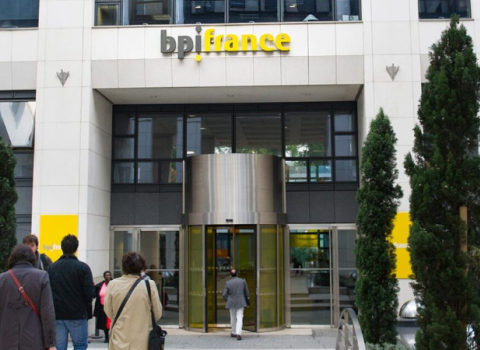Women remain stubbornly under-represented in EU research and science despite numerous attempts to address the imbalance, according to the European Union’s latest analysis, ‘She Figures: Gender in Research and Innovation 2012’. One particularly stark statistic shows that despite the fact more woman than men are graduating, woman comprise only 20 per cent of senior academics in Europe’s universities.
This is not just a ‘numbers game’ in terms of unused potential, according to R&D Commissioner Máire Geoghegan-Quinn. The under-representation of women not only deprives them of the opportunity to contribute towards research and innovation on an equal footing, but given the different perspectives that women bring, “the quality of research and innovation suffers as well,” Geoghegan-Quinn said.
The Commission has systematically monitored the gender balance in research and innovation since 2003, and some gaps have been reducing slowly over recent years, but Geoghegan-Quinn said, “Gender imbalance in research is not a self-correcting phenomenon and so we must redouble our efforts.”
Female researchers make up only 33 per cent of the EU-27 total, and only 32 per cent of scientists and engineers. The imbalance is also exercising the EU’s Chief Scientist Anne Glover, who describes the rate of change as "frustratingly slow".
Barriers to career progression
In 2010, 55 per cent of university students and 59 per cent of graduates were female. This dominance fades out at PhD level, where females constitute 49 per cent of students and 46 per cent of graduates. The imbalance increases further up the career ladder, with women representing 44 per cent of entry-level academic researchers, 37 per cent of intermediate-level academics, and only 20 per cent of senior professors. At the top rung, only 15.5 percent of higher education institutions are headed by women.
Disparities across sectors and regions
Women researchers were the least well represented in Luxembourg, Germany, and the Netherlands (21 per cent, 25 per cent, and 26 per cent respectively), and best represented in Latvia and Lithuania, where in 2009 more researchers were female than male. In Bulgaria, Portugal, Romania, Estonia, Slovakia, and Poland, at least 40 per cent of researchers were women.
Curiously, while science and engineering remain overwhelmingly male dominated, the women who enter the sector tend to prosper. Women in this field account for only 31 per cent of the student population at the first level, but this expands to 38 per cent of PhD students and 35 per cent of PhD graduates.
The proportion of women among full professors was highest in the humanities and the social sciences, at 28.4 per cent and 19.4 per cent respectively, and lowest in engineering and technology, at 7.9 per cent. In 2010, female PhD graduates equalled or outnumbered men in all fields – apart from science, mathematics and computing (40 per cent), and engineering, manufacturing and construction (26 per cent).
Outside academia, the imbalance continues. On average 40 per cent of all researchers in higher education and government are women, but only 19 per cent in the private sector. This is worse than it looks since industry is by far the biggest spender on research.
Why equality in science matters
This is first and foremost “an issue of democracy,” according to Mikael Gustafsson, MEP who is Chair of the Women's Rights and Gender Equality Committee of the European Parliament. “It is clear that women are being discriminated against, that their professional development in this field is not sufficiently supported, and certainly not supported at the same level as men,” he said.
Equality aside, the loss of highly educated scientists makes no commercial sense. At a time when more women are studying in more diverse areas of science than ever before, retaining these scientists is key to Europe's competitiveness, Glover believes. “The primary concern for every institution or business should be to attract, support and retain the most able workforce, and that must include urgent attention to gender equality.”
It is also the case that gender imbalance undermines the quality of scientific research. “There is value in embracing gender difference. Women and men often approach problems differently to generate the best science,” Glover said.
The whole issue is particularly important in the context of Horizon 2020 - the EU's flagship R&D programme- which is due to begin next year. It is hard to see how we can achieve its targets of excellence in science, industrial leadership, and addressing societal challenges, without unlocking the potential of all our scientists. "If we don't draw on all the resources we have in society - both women and men - we will not give ourselves the best possible chances to achieve the research results we strive for,” Gustafsson said.
Not just a simple catch up
In the EU-27 on average, the number of female researchers has increased at a rate of 5.1 per cent per year compared with 3.3 per cent for men since the EU began monitoring gender balance ten years ago. Promising perhaps, but at this rate women will take years to catch up because the growth rate for women is from a smaller base than for men.
While family and childcare responsibilities are one obvious reason why women are under-represented, Glover claims there are also many subtle obstacles, including recruitment procedures that favour men and the exclusion of women from key committees. “I have seen a lack of women on influential decision-making bodies and have been dismayed to find out that appointments can be made informally in environments where women are often excluded," she told Science|Business.
One other prominent woman scientist, Ingrid Wünning Tschol, head of the Robert Bosch Foundation’s Health and Science programme has noticed a similar trend, "Real jobs are being given away at bars. Men naturally assemble to catch up on things at every conference I attend. Women need to start doing it too,” she said.
One contribution Tschol is making to solving the problem is the AcademiaNet website, an online database of the curriculum vitae of leading female scientists. Profiles of outstanding female scientists are added to the website following a strict selection process, including a recommendation by a renowned scientific organisation, such as the Max Planck Society or the European Research Council. The initiative has prospered, with profiled scientists being increasingly offered professorships and leadership positions and five being elected to the German Council of Science and Humanities.
Dramatic Measures
The lack of progress prompts calls for a change of tactics, and the EU is now making gender equality a priority for science. “For the first time in the history of European research programmes, the aim to promote equality between men and women is explicitly set out in Horizon 2020 as a cross-cutting issue,” said Geoghegan-Quinn. “Gender experts will be involved in the programming of research; we will highlight projects that involve a gender dimension, monitor gender-balance within research teams and run pilots in relevant areas.”





 A unique international forum for public research organisations and companies to connect their external engagement with strategic interests around their R&D system.
A unique international forum for public research organisations and companies to connect their external engagement with strategic interests around their R&D system.